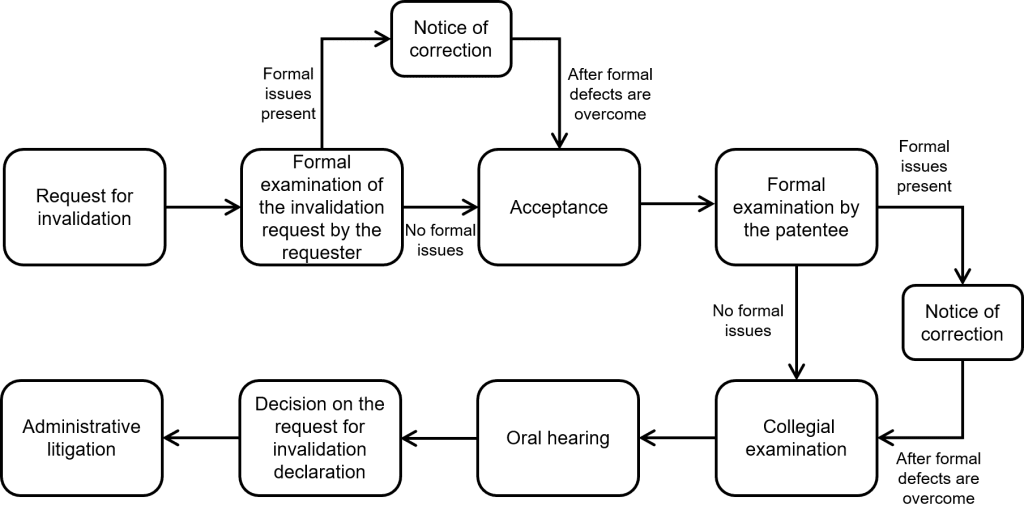The patent invalidation procedure is a mechanism for post-grant validation, essentially serving as an error-correction process. It is also a common defensive measure employed by alleged infringers in infringement lawsuits. Additionally, companies can use patent invalidation requests to attack competitors and gain market share, while also facing the risk of competitors breaking their patent protection barriers through invalidation requests.
According to Article 45 of the Chinese Patent Law, from the date of the announcement of the grant of a patent right by the State Council’s patent administration department, any entity or individual who believes that the grant of the patent right does not comply with the relevant provisions of this Law may request the Patent Reexamination Board (now changed to the Reexamination and Invalidation Department of the CNIPA) to declare the patent right invalid.
This article provides a detailed introduction to the specific procedures involved in the patent invalidation process in China.
1. Filing an Invalidation Request
Receiving Department: The Reexamination and Invalidation Department (In 2019, the “Patent Reexamination Board of the CNIPA” was changed to the “Reexamination and Invalidation Department of the CNIPA”)
Documents for Invalidation Request:
- Patent Invalidation Request Form
- Authorization Form for Patent Invalidation Procedure
- Possible Evidence
Fees:
- Invention Patent Invalidation Request Fee: CNY 3000
- Utility Model Patent Invalidation Request Fee: CNY 1500
- Design Patent Invalidation Request Fee: CNY 1500
Submission Method:
- For paper-filed patents, the invalidation request must be submitted in paper form.
- For electronic-filed patents, the invalidation request can be submitted either electronically or in paper form.
2. Formal Examination (For Requesters)
Before accepting an invalidation request, the Reexamination and Invalidation Department will review the above documents, fees, and information, and further examine the following formal issues:
Subject of Invalidation Request: The subject of the invalidation request should be a granted patent that has been announced, including patents that have terminated or been abandoned (except those abandoned from the application date). Unannounced patent applications are not within the scope of invalidation requests. Therefore, during case handling, it is important to confirm whether the involved patent has been granted.
Qualifications of Invalidation Requester: The Patent Examination Guidelines specify four situations in which an invalidation request is not accepted:
- The requester lacks civil litigation subject qualifications, i.e., the requester is not a person without civil capacity as stipulated in the General Principles of Civil Law.
- The invalidation request is based on the granted design patent conflicting with the legitimate rights obtained by another person before the application date, but the requester cannot prove they are the prior right holder or an interested party. Here, an interested party is someone entitled to sue or request administrative action for infringement under relevant laws.
- The patent owner requests invalidation of their patent in entirety, and the submitted evidence is not publicly available publications, or the requester is not one of the co-owners of the patent.
- Multiple requesters jointly file an invalidation request, except for all co-owners of a patent filing for their co-owned patent.
Scope, Reasons, and Evidence for Invalidation Request: The reasons for the invalidation request must conform to the grounds stipulated in the Patent Examination Guidelines, and the corresponding evidence must meet the relevant requirements of the guidelines.
Document Format:
- For paper-submitted invalidation requests: The request form and its attachments should be submitted in two copies and in the specified format.
- For electronic submissions: All relevant documents are typically submitted through the CPC client.
Fee Payment Deadline: The requester must fully pay the invalidation request fee within one month of filing the request (the 15-day presumed receipt period does not apply).
Authorization Procedures: If the requester delegates a patent agency in the invalidation procedure, they should submit an authorization form for the invalidation procedure. The requester can delegate multiple patent agencies but must designate one as the recipient. Authorization, termination, and resignation procedures are directly handled by the Reexamination and Invalidation Department.
3. Issuance of Formal Examination Notices
If formal defects are found during the examination, the following types of formal examination notices may be issued based on specific issues:
Correction Notice: For example, if the submitted invalidation request form does not meet formal requirements, a “Correction Notice” will be issued. The requester must correct the defects within 15 days of receiving the notice.
Notice of Deeming Invalidation Request as Not Submitted: For example, if the invalidation request fee is not paid or insufficiently paid within one month, a “Notice of Deeming Invalidation Request as Not Submitted” will be issued, and the request will be considered not submitted. The requester must resubmit the invalidation request and pay the full fee within one month.
Notice of Not Accepting Invalidation Request: For example, if the requester does not specify the reasons for invalidation in the request form or submits evidence without detailing the invalidation reasons or specifying the evidence basis for each reason, a “Notice of Not Accepting Invalidation Request” will be issued. The requester needs to modify the request form, specify the reasons for invalidation in detail, or combine the evidence to specify the reasons and resubmit the request.
Other Notices: These are rarely encountered during case handling. Generally, no response is required unless the specific notice content requires the requester and patent owner to respond within a specified period.
If there are no formal defects, the process proceeds to the next step: acceptance.
4. Acceptance
If the invalidation request passes the formal examination and complies with the relevant provisions of the Patent Law, its Implementing Regulations, and the Examination Guidelines, the Reexamination and Invalidation Department will issue a “Notice of Acceptance of Invalidation Request” to both the requester and the patentee. The patentee will receive copies of the invalidation request and related documents and is required to respond within one month (15-day presumed receipt period applicable) from the date of receipt of the notice.
5. Formal Examination (For Patentee)
Upon receiving the “Notice of Acceptance of Invalidation Request” and the copies of the invalidation request and related documents, the patentee can respond within one month (15-day presumed receipt period applicable). The patentee may also choose not to respond, which will not affect the Reexamination and Invalidation Department’s review of the case.
If the patentee responds within the specified period, the Reexamination and Invalidation Department will conduct a formal examination of the documents submitted by the patentee. If there are issues with the formal documents, a “Correction Notice” will be issued, requiring the patentee to make corrections within fifteen days (15-day presumed receipt period applicable) from the date of receipt of the notice.
In the invalidation stage, formal examinations for the patentee primarily involve authorization procedures. If the patentee delegates a patent agency in the invalidation procedure, an authorization form for the invalidation procedure must be submitted, specifying that the authorization is limited to matters related to the invalidation procedure.
The patentee can delegate either a full-service agency or other agencies that are not full-service agencies. Authorization, termination, and resignation procedures are handled directly by the Reexamination and Invalidation Department and do not require changes to be recorded with the CNIPA. Multiple agencies can be delegated, but one must be designated as the recipient.
6. Collegiate Review
Composition of the Collegiate Group: After accepting the invalidation case, a collegiate group of one, three, or five members may be formed. Generally, the group consists of three members.
Scope of Review: The Reexamination and Invalidation Department only reviews the scope, reasons, and submitted evidence of the invalidation request as presented by the parties. It is not obligated to conduct a comprehensive review of the patent’s validity. If a previous decision declaring part of the patent invalid has become effective, the review will be based on the remaining valid patent rights.
Evidence Submission Deadline: The requester can supplement evidence and specify the invalidation reasons within one month from the date of submitting the invalidation request (15-day presumed receipt period not applicable). If the evidence is in a foreign language, a Chinese translation must be submitted within this period.
The requester can add reasons for invalidation after one month from the submission date (15-day presumed receipt period not applicable) under the following circumstances:
- In response to the patentee’s amendments to the claims (other than deletions) or rebuttal evidence, the requester can add reasons for invalidation within the specified period and provide specific explanations.
- Before the conclusion of oral proceedings, the requester can submit common knowledge evidence such as technical dictionaries, manuals, and textbooks, or evidence in the form of notarized documents or originals to improve the evidence’s legal format, and provide specific explanations for the added reasons.
Evidence Submission by Patentee: The patentee can submit or supplement evidence and translations within the specified one-month response period. Common knowledge evidence and notarized documents or originals can be supplemented before the conclusion of oral proceedings.
Issuance of Notices: If the patentee responds to the “Notice of Acceptance of Invalidation Request,” the Reexamination and Invalidation Department will issue a “Document Transmission Notice,” forwarding the patentee’s response to the requester, who must respond within one month (15-day presumed receipt period applicable).
Similarly, if the requester submits any responses or documents within the prescribed period, the Reexamination and Invalidation Department will forward these to the patentee through a “Document Transmission Notice.”
7. Oral Proceedings
The Reexamination and Invalidation Department can decide to conduct oral proceedings for the invalidation request based on the parties’ requests or the case’s needs.
8. Invalidation Request Decision
The invalidation request decision can be one of the following three types:
- Declare the entire patent invalid.
- Declare part of the patent invalid.
- Maintain the validity of the patent.
Declaring a patent invalid includes declaring the entire patent or part of the patent invalid. According to the Patent Law, an invalidated patent is considered never to have existed.
9. Litigation
Suggestions for Invalidation Procedures:
- a. Monitor tasks after receiving client instructions.
- b. Confirm the submission method for the involved patent’s documents in advance to determine the submission method for the invalidation request and/or opinion statements.
- c. Pay the relevant fees on the submission day (monitor whether fees are paid simultaneously if possible).
- d. Confirm the type of involved patent to ensure full payment of invalidation request fees.
- e. Recheck documents that may cause formal issues.
- f. Familiarize yourself with the specified deadlines and statutory limits during the invalidation stage, inform clients when providing suggestions, and monitor deadlines.
- g. Carefully read the notification upon receipt, determine the final response deadline, inform clients of the deadline promptly, and monitor it internally.
- h. Upon receiving the official decision, carefully review the results. If there are issues, communicate with the Reexamination and Invalidation Department and seek correction of the invalidation decision. Monitor the relevant deadlines until the corrected decision is received.
- i. Finally, after completing the invalidation procedure, ensure all fee invoices are issued when transmitting the final invalidation decision.
This is a comprehensive overview of the invalidation request procedure. For any questions, please consult patent2cn.


